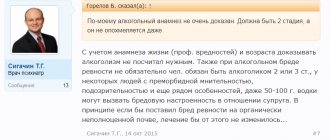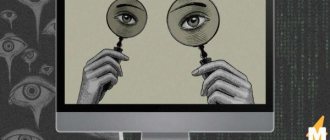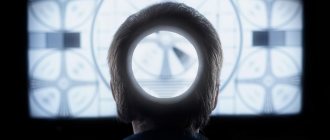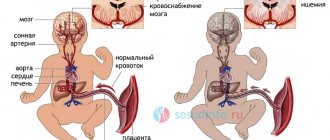The effectiveness of business interaction is determined not only by how the interlocutor’s words are understood, but also by the ability to correctly interpret visual information, that is, the partner’s gaze, his facial expressions and gestures, body movements, posture, distance and angle of communication, as well as the timbre and timbre of speech. It is “reading” the nonverbal, expressive repertoire of the interlocutor that contributes to the achievement of mutual understanding. Tracking such information during any business conversation can arm you with information about the moral and personal potential of your partner, his inner world, mood, feelings and experiences, intentions and expectations, degree of determination or lack thereof.
The inner world of a person and the language of his body and gestures are interconnected. The reflex nature of most human reactions does not allow him to fully control his own gestures, posture and facial expressions. People rarely think about their movements during a conversation, therefore, in a situation where their thoughts and words do not coincide, their eyes and gestures give it away, as they are places of information leakage.
With the help of facial expressions, postures and gestures, a person’s spiritual energy, movements, and symptoms are expressed (for example, paleness or redness of the skin, tremor of the fingers). To understand this language, it is necessary to study various means of expression and be able to interpret them correctly and adequately.
As is known, the study of an interlocutor (communication partner) by his gestures, facial expressions and postures belongs to the field of kinesics. Let's look at just a few of these kinesic components.
Just as verbal languages differ from each other depending on the type of culture, so the nonverbal language of one nation differs from the nonverbal language of another nation. It should be noted that the most common gesture is touch, or tactile contact. Touch, or tactile contact, is the first and most important thing in a person’s life.
Most cultures place many restrictions on touching. Every society has ideas about how, when, who, and who can be touched. If we collect a list of touches, we will see that they are carried out differently in different cultural layers.
Relevant products in the Online store:
Givenchy
Givenchy Pour Homme Body and Hair Shampoo
RUB 1,299
Dior
DIOR BRONZE Sunscreen oil-mist for face, body and hair SPF15
from 2,340 rub.
Givenchy
Irresistible Givenchy Moisturizing Perfumed Body Milk
from RUB 2,955
new
Dior
J'Adore Body Cream
from 4,748 rub.
All goods
How the hero’s behavior, gestures and speech change. Using gestures in public speech
According to research by scientist Albert Meyerabian, the first perception of a speaker during his speech is built 7% from verbal means, 38% from sound means (tone, intonation), and 55% from non-verbal means (gestures, facial expressions).
In the process of public speaking, the speaker communicates. The latter is divided into verbal and non-verbal. Verbal communications are all linguistic means of transmitting information. These include argumentation, criticism, verbal expressions. Nonverbal communication is all non-linguistic means of transmitting information such as postures, gestures, and facial expressions.
Since gestures were first mentioned in scientific literature, scientists have discovered and recorded more than 1,000 gestures. Not a small number. It makes it much more difficult to classify gestures. The broadest classification divides gestures into natural (unconscious, i.e. appearing spontaneously, every person possesses them) and artificial (conscious, often associated with a person’s professional activity, for example, a conductor, stockbroker).
However, this article will consider another classification of gestures, which is divided into the following gestures:
- rhythmic;
- emotional;
- index fingers;
- graphic;
- symbolic.
1
Rhythmic Gestures
This type of gesture is associated with the tact of public speaking. They enter speech with pauses, acceleration or deceleration of intonation. When to put logical emphasis. We can see such gestures from speakers on TV. When a person speaks slowly, calmly, his gestures are not hasty. And vice versa, when the speaker speaks animatedly, emotionally, gestures become more active.
Tip: Gesture for emphasis.
2
Emotional Gestures
From the name itself it is clear what this type of gestures is associated with. They are designed to emotionally enhance speech. Using these gestures, the speaker adds expressiveness to his speech. Such gestures can depict joy, sadness, anger, calm, excitement, delight, bewilderment, etc. It is difficult to give an example of such a gesture. Because they, as a rule, spontaneously appear in our speech. But at the same time, they can be found in almost any performance.
Tip: Use gestures to engage your audience.
3
Pointing gestures
With their help, we point to something on stage. If during a public speech you have a board behind you and you are actively working with it, then all gestures directed to this board are indicative. If you need to select someone from the audience to continue speaking or pay attention to someone, then you will also use this type of gestures. As a rule, this is a movement of the hand with outstretched fingers in the direction of the target.
Advice: gestures should be natural, following the natural impulses of a person.
4
Iconic gestures
Such gestures complement the speaker's speech. This is due to the complexity of presenting the text of the speech. Sometimes it's easier to show than to explain. For example, you show the size. If it’s big, then you spread your arms to the sides. If it’s small, then you narrow your palms towards each other.
Advice: gestures should be open, demonstrate a desire for contact, goodwill, and a desire to convince.
5
Symbolic Gestures
Such gestures can convey deep meaning and meaning. One gesture is enough for the audience to understand the speaker without words, what he would like to say. In other words, it turns out that a symbolic gesture replaces words. For example, a nod as a sign of greeting or a bow as gratitude for applause.
Advice: gestures should be expressive, decorating speech.
Related materials:
Givenchy | Yves Saint Laurent | Dior | Givenchy | Yves Saint Laurent | Dior | gestures | pose | signal | language | subconscious | facial expressions
Articles
- Love burnout March 23, 2020, 00:00
- Luxurious everyday life: how jewelry changes the image April 20, 2020, 00:00
- Handmade: Japanese temari balls April 09, 2020, 00:00
Video
- New anti-aging care line Forever Youth Liberator from Yves Saint Laurent March 20, 2013, 18:00
- New men's fragrance L'Homme Sport from Yves Saint Laurent October 1, 2014, 14:00
- New fragrance Black Opium from Yves Saint Laurent February 03, 2020, 22:00
Psychology of facial expressions and gestures
Why does the company of some people irritate us, while on the contrary we are drawn to others like a magnet? It's not just about the taste of clothes and the degree of grooming. The facial expressions and gestures of our interlocutors can tell a lot about them without words. Gestures and facial expressions play a huge role in the psychology of communication. The main thing in this matter is observation.
Nonverbal communication (facial expressions and gestures) is directly dependent on the social position of a person. When communicating with a high-class business person holding, for example, a leadership position, you will notice the richness of his vocabulary. At the same time, if your interlocutor does not even have a higher education, his communication with you will be dominated by body language, gestures and facial expressions. The exception is highly emotional people. Gestures and facial expressions are their main helpers in expressing their emotions.
The speed of nonverbal communication also depends on age. If a child who has just told you a lie immediately covers his mouth with his palm, then in adulthood he will simply run his finger over his lips. That is why it is not always possible to immediately understand what the gestures and facial expressions of adults mean. But the very knowledge of the psychology of facial expressions and gestures will help you not only communicate something about yourself, but also influence other people and relationships with them.
The meaning of facial expressions and gestures
Facial expressions, gestures, movements and posture make up a single picture of what kind of person is in front of you. Before you start communicating, first pay attention to the posture of the interlocutor.
- if your interlocutor keeps his hands on his belt, then in front of you is a focused and business-like person, ready to defeat you with his pressure. Another possibility is that the person taking this position is in an aggressive state. This will be confirmed by widely spaced legs and fingers clenched into fists;
- If you are sitting at a negotiation and your interlocutor leans his body forward a little and holds on to the chair with his hands, or puts his hands on his knees, it’s time to end the conversation. The meaning of gestures and facial expressions in this case will tell you that the person wants to end your meeting;
- If you are a woman and your interlocutor is a man, then when you see his fingers tucked into a belt or pocket slits, and even dilated pupils, you can be sure that he is being assessed not only as an interlocutor, but also as a person of the opposite sex. Moreover, the man’s inner wishes are the most unambiguous.
Facial expressions and gestures of lies
Facial expressions and lying gestures are also easy to recognize. The fact is that our nonverbal assistants always tell even the most insignificant lies. If a person can control his thoughts and words, then body language, gestures and facial expressions are almost beyond his control. Some individuals specifically train their gestures so as not to be caught in a lie. However, it is worth remembering that almost all nonverbal communication: facial expressions and gestures of a liar are associated with touching the face.
- We already know about children covering their mouths when lying. Particularly sophisticated individuals can veil this gesture by coughing into their fist or palm. However, it is worth remembering that if a person covers his mouth with his hand when you speak, it means that he feels that you are not telling the truth;
- Facial expressions and gestures of lying also include touching your nose with your hand and rubbing your eyes. In the first case, the person disguises the gesture of closing his mouth. The hand seems to slip and scratch its nose. In the second case, the interlocutor covers his eye with his hand or fingers, unconsciously hiding from his own lies. Also in this case, the interlocutor’s gaze will be directed to the side;
- If during communication a person scratches or rubs his ear with his fingers, this means that he is trying to isolate himself from your words. Perhaps he no longer wants to listen to you, or intends to say something in response. And if scratching and touching move to the neck, your interlocutor is not sure that he agrees with you;
- the last set of facial expressions and gestures of lies touches the fingers in the mouth. Psychologists have proven that pulling various objects into the mouth is an attempt to protect ourselves, to return to the time when, as infants, we found peace only by taking our mother’s breast. When communicating, this gesture will mean that your interlocutor needs support and approval.
If you set out to thoroughly know the psychology of facial expressions and gestures, you need to practice daily in this area. Deciphering facial expressions and gestures can begin with analyzing other people. Crowded places will be an excellent platform for such experiments. For example, train stations, subways, and even nightclubs are suitable for studying facial expressions and gestures. In such places you can meet any emotions, states and moods. And of course, watch yourself for a few minutes a day. By studying the psychology of facial expressions and gestures, you will gain access to a unique way to get information where others will not notice it.
Gestures of dominance
Ownership
We very often show our direct relationship to some objects or people by using the tilt of the body towards them. This is often a demonstration of ownership. This is especially well observed in ordinary everyday moments of life.
Superiority
The highest degree of this emotion is expressed in a sitting position in the so-called “director pose” or “boss pose.” Your arms can rest imposingly on the armrests of the chair or lie behind your head, with your legs crossed over your legs. If at the same time your eyes are slightly closed or their corners are slightly squinted, and the gaze itself is directed downward or looks you from head to toe, this means pure arrogance and outright disdain.
This body position is often adopted by people in leadership positions. They are confident in themselves, feel their strength, and demonstratively express their own importance to their subordinates. An attempt to copy this gesture threatens immediate dismissal from work. Therefore, just be patient, especially if his position is not supported verbally.
Finger Gestures: Spire
This gesture can often be observed in a person sitting at a table: the hands have good support, the fingers are connected, in a kind of house or spire. This gesture is characteristic of people who feel confident and superior in a particular situation. By connecting your fingertips, the interlocutor tells you that he feels confident, calm and very pleased with this.
There are two types of spire - raised and lowered. The first, raised spire demonstrates complacency, superiority and confidence. The second, omitted, means that the person is listening to you very carefully, analyzing the information received.
Equality
It would be more accurate to say the opposite – a demonstration of inequality. This gesture is characteristic of almost all men; women use it extremely rarely, if only because we are talking about a handshake. The nature of the handshake reveals the other person's intentions. A person demonstrating his leading position, his leadership, at the moment of joining two hands for a handshake, will definitely place his hand with the back side up.
It’s quite simple to check how persistent he is in his leadership status: try turning your hand up. A person who categorically disagrees with equality between you will not allow this to happen; you will feel resistance. You will not be able to convince him to give up the dominant role.
Top
Poses of uncertainty and doubt
Uncertainty
Non-verbal communication, which is accompanied by gestures such as scratching or rubbing the back of the ear or neck in most cases, means that the person does not quite understand what you mean or what exactly is required of him.
If at the same time a person assures you that he fully understands, be sure that he is deceiving you. Nonverbal gestures gave him away: he didn’t understand anything.
Mistrust
Disagreement with someone's opinion is revealed by covering your mouth with your hand. The person seems to be holding back from appositional statements and suppressing true feelings. If your friend unexpectedly made such a gesture of distrust in a conversation, it is better to stop and think about what words provoked such a reaction, and correct the delicate situation. By observing your boss's behavior and noticing similar reactions in him, you will easily understand what you should talk about and what it is better to remain silent about. This is very important, because distrust can quickly turn into a stage of non-acceptance, and then into a categorical refusal.
If such nonverbal gestures accompany the interlocutor’s story, he is probably lying or significantly understating the story.
Top
Secrets of facial microfacial expressions
Different facial expressions on a girl
To learn how to read people's thoughts from their faces, you need to understand how a person's facial expressions and his consciousness are connected. Micromimicry is a person’s emotional reaction, which finds its manifestation in the slightest movements of our face. Nonverbal psychology studies this relationship. According to her theory, there is verbal communication, that is, real, and there is nonverbal communication - without using language, but with the help of facial expressions, gestures and voice intonation.
A person’s thoughts and his facial expressions are inextricably linked; moreover, contraction of the facial muscles occurs both voluntarily and involuntarily, so sometimes we are not able to fully control our emotions, which are clearly visible on the face. Your ability to read the thoughts and feelings of your interlocutor and the effectiveness of your communication depend on good knowledge and practice. You should be especially careful when facial expressions do not correspond to a person’s words, because this already indicates the slightest manifestation of a lie.
There is nothing supernatural or psychic about understanding a person's thoughts. The muscles around the eyes, cheeks, wrinkles near the nose, lips - these are clues through which you can understand the true attitude of another person to current events. With the help of such facial cues, we recognize 7 main types of emotions.
Happiness
A person experiencing joy and satisfaction will not hide his feelings. Facial language indicates his feelings. The corners of the mouth rise, the nasolabial folds stretch towards the cheeks, and wrinkles form. It’s easy to recognize this human emotion, but sometimes doubts arise if a person’s eyes say the opposite.
Astonishment
Sincere surprise is expressed in the involuntary raising of the eyebrows, widening of the eyes and opening of the mouth, while the lips form an oval. Surprise is the easiest emotion to fake. However, there are secrets with which you will understand how new and amazing the thought you uttered is. Notice the wrinkles on the forehead and the appearance of shine around the pupil of the eyes. They indicate the sincerity of the interlocutor.
Anger
One of the most unpleasant emotions that people find most difficult to hide. The main indicators of anger are folds between the eyebrows, wide nostrils, raised extreme corners of the eyebrows, narrowing and straining of the eyes. Pay special attention to the mouth: it is either tightly closed, as if constrained, or open, but the lips are square and the jaw is pushed forward.
Disgust
If the interlocutor or the situation itself, this will be evidenced by his narrowed eyes, raised cheeks, flared nostrils and wrinkled nose. The upper lip will involuntarily rise up, as if curled. Eyebrows droop down in disgust.
Fear
The manifestation of even the slightest fear is indicated by eyebrows that are raised, but not arched. They are rather in a horizontal position. The eyes open wider than usual, but there is no shine in them, unlike surprise. Additional clues to the presence of fear are flared nostrils and a slightly open mouth.
Sadness
When a person is upset, his eyebrows remain flat, but at the same time they move down along with the skin above the eyes. The lips are compressed, the corners of the mouth move down, the lower lip moves forward and puffs out.
Contempt
Contempt is indicated either by a gaze or from top to bottom. The mouth and lips are in the same position, they are constrained, but at the same time a half-smile appears. Eyebrows, eyes and wrinkles do not change position.
How to recognize a lie by facial expressions?
Scientists have proven that there are two neural connections in the brain that are responsible for microfacial expressions. When these connections begin to “fight”, as a result, different interpretations of emotions appear. The connection between gestures and facial expressions plays a special role in detecting deception.
- Looking to the side
. Averting one's eyes indicates a person's lack of interest in the events around him or the desire to hide information. Sometimes the opposite reaction appears - a gaze into the eyes. This reaction occurs when a person knows that it is not recommended to look away when being deceived. - Nervous lip biting
. Such a movement indicates the interlocutor’s anxiety or desire to lie. - Frequent blinking
. This reaction is a consequence of an unexpected question or a stressful situation, from which the only way out is to get out and lie. - Instant nose touches
. Scientists say that when lying, the nose begins to itch, so the deceiver wipes it with a sharp movement.










